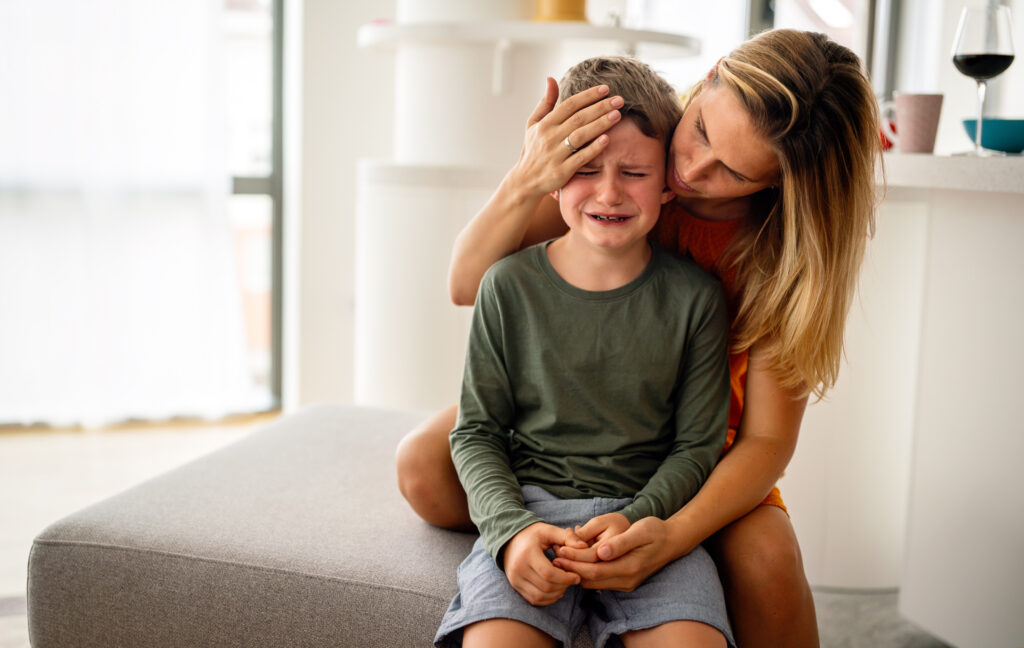Introduction: Navigating the Complex World of Foster Care
Understanding the behaviour of the children we care for in foster care can feel like untangling a complex web of emotions and experiences. Everyday actions, often labelled as “challenging behaviours,” have underlying narratives that reveal more than what meets the eye. Imagine you’re trying to decipher a language you haven’t yet mastered, a language where behaviour is the speech.
As foster carers in the UK, you’re tasked with the incredible mission of not only deciphering this language but nurturing the children in your care to feel safe and understood. It isn’t easy, especially when faced with situations where the usual parenting responses don’t work.
In this post, we’ll explore the compassionate framework of understanding behaviour in children affected by trauma, focusing on how we can support children through their emotional responses. We’ll uncover how to decode their actions, provide practical strategies, and help you connect more deeply with the children in your care.
Roadmap of What’s Ahead
1. Foundation of Behaviour Understanding: We’ll start by defining key concepts and the “why” behind behaviours through the lens of trauma and attachment theory.
2. Importance of Understanding Behaviour: Discover why recognising the root of behaviours matters for a child’s development.
3. Practical Strategies for Foster Carers: Learn actionable steps to implement this understanding in daily interactions.
4. Advanced Applications and Environmental Considerations: Dive into deeper techniques and environmental factors that can support this journey.
5. Monitoring and Adjustment: Tips on how to track progress and adapt strategies as needed.
Hook: Connecting with Everyday Experiences
Picture this: a child in your care suddenly erupts in frustration over something seemingly small. Your instinct might be to correct the behaviour directly, but what if you saw this as a message instead—a call for help from a child whose communication tools are still developing? This post will guide you in transforming these challenging moments into opportunities for growth and understanding.
Foundation of Behaviour Understanding
Understanding Behaviour in the Context of Trauma
What is Behavioural Communication?
In foster care, behaviour is more than just an action—it’s a form of communication. Children may not have the words to express their feelings, so they use actions to convey what they’re experiencing. This is especially true for children who have faced trauma, as traditional methods of communication might feel unsafe or inadequate.
The Link Between Trauma and Behaviour
When children experience trauma, it impacts their ability to regulate emotions. The brain’s threat response system becomes more reactive, meaning what might seem like a small event can trigger a big reaction. Understanding this helps us see behaviour not as “naughty” or “bad,” but as a response to stress and unmet needs.
Challenges for Foster Children
Children in care often face additional stressors, such as the loss of primary attachments or inconsistent environments. These elements can amplify reactions and behaviours, making it crucial to understand the root causes rather than focusing solely on the behaviour itself.
The Role of Foster Carers
As carers, we are pivotal in decoding these behaviours. We’re tasked with rebuilding trust and providing safety, even in the face of challenging behaviours. Adopting a trauma-informed approach allows us to support children in developing healthier ways of expressing themselves.
Importance of Understanding Behaviour
Recognising Behavioural Needs for Development
Effects of Misunderstanding Behaviour
When a child’s behaviour is misinterpreted, they are at risk of further developing negative self-perceptions. Labelling as “bad” or “difficult” can impact their self-esteem and emotional growth. It’s about shifting the perspective to help children see themselves as valued and capable, no matter their current challenges.
The Role of Understanding in Development
By understanding the true nature of behaviour, we provide pathways for secure attachment and self-regulation, which are vital for development. This understanding encourages a shift from seeking compliance to nurturing connection, allowing children to feel safe expressing their needs.
Long-Term Benefits
When we address behaviour through a trauma-informed lens, the benefits are profound. We see a reduction in immediate behavioural issues and support the child in building resilience. These steps pave the way for emotional intelligence, self-regulation skills, and healthy relationships in adulthood.
Practical Strategies for Foster Carers
Concrete Steps You Can Take
Strategy 1: Build Safety Before Correction
Start by creating an environment where the child feels safe. This might mean maintaining consistent routines, offering predictability, and using a calm tone. Once a child feels secure, they are more open to guidance and correction.
Strategy 2: Acknowledge Emotions
Instead of reprimanding, begin by validating the child’s feelings. For example, if a child is angry, acknowledge it: “I see you’re feeling very upset right now.” This shows them that their emotions are heard and that they’re not alone in managing them.
Strategy 3: Co-regulation Techniques
Actively participate in helping children calm down. Engage in activities like deep breathing together or offer sensory tools such as stress balls. Co-regulation is about being present and assisting the child in modulating their emotions through your support.
Strategy 4: Reflective Listening
Take time to actively listen to what the child may be communicating through their behaviour. Encourage them to explore their feelings by asking, “What do you think happened that made you feel this way?”
Adapting Strategies for Different Children
Remember, every child is unique, and what works for one might not work for another. Stay open to adjusting your approaches, drawing on what you learn from the child’s responses and your observations.
Advanced Applications and Environmental Considerations
Tailoring Approaches to Complex Needs
Understanding Advanced Trauma Responses
Consider specialised training in topics such as sensory processing or specific attachment styles. These can offer deeper insights into why a child may behave a certain way and arm you with new tools for support.
Creating a Calming Environment
Modify the child’s physical environment to reduce stress. This can include a quiet, safe space to retreat when feeling overwhelmed, or sensory-friendly toys that help them self-soothe.
Working with Your Support Network
Collaborate with educators, therapists, and other professionals. Consistent messaging across multiple settings helps reinforce the safety and understanding you’re building at home.
Monitoring and Adjustment
Keeping Track of Progress
Recognising Positive Changes
Keep an observational log to track behavioural trends and pinpoint when changes occur. Celebrate and acknowledge even the smallest progress, as these are steps towards healing.
When to Adjust Strategies
Stay flexible. If a strategy doesn’t seem practical, don’t hesitate to adapt. Engage with the child and your support network to brainstorm new ideas that might be more effective.
Celebrating Small Wins
Every small step forward is a significant milestone in foster care. Celebrate these moments with your child to boost their confidence and reinforce positive behaviours.
Conclusion: Embracing the Journey of Understanding and Growth
As we conclude, remember that the path of foster care is one of patience, understanding, and growth for you and the children in your care. By shifting our focus to understanding behaviour as a form of communication, we equip ourselves to better support and nurture these extraordinary young lives.
You’re not alone in this. Join discussions, share your experiences, and learn from the collective wisdom of others who walk this path alongside you. Every step you take brings healing and hope.
Thank you for being a vital part of this journey. Your role in fostering understanding and safety is nothing short of transformative for the children in your care. You are making a significant difference every single day.


